Eagles Take Down Owls In A Sweeping 28-3 Win, Staying Undefeated



Boston College football’s Saturday showing at Temple featured a renewed rushing attack and a rock-solid defense. The Eagles put up 28 points on 221 total yards with all four of their touchdowns and all but 34 yards coming by way of the run. On the defensive side of the ball, BC renewed fans’ faith by giving up just three points on a field goal.

Merging Parenting and Public Health
 I SABELLA T HORPE Heights Staff
I SABELLA T HORPE Heights Staff
Bryce Vine Headlines Stokes Set


Sixty-three countries—nearly a third of the world—ban the use of physical punishment with children. In the early 1990s, that number was only four. U.S. law protects adults from assault, but current policies and societal conventions suggest that assault toward children is more acceptable, particularly if it is done by parents or guardians. What is often overlooked is the connection between physical punishment of children and broader public health and societal issues— which is where Catherine Taylor’s
work lies.
“From a public health perspective, when we think about what is developmentally appropriate for children, there is no line between physical punishment and abuse,” Taylor said. “There is no safe, healthy way to hit a child, so the evidence shows hitting children can only lead to less healthy outcomes.”
Taylor, who joined Boston College’s School of Social Work in the summer of 2020, has spent over 20 years trying to understand the relationship between public health, violence protection, and children’s exposure to trauma.
A3 SPORTS Field
A10 Monday, September 20, 2021 www.bcheights.com Chestnut Hill, MA A RTS
INSIDE THIS ISSUE ARTS.............. OPINIONS...... SPORTS....... NEWS........... METRO.......... MAGAZINE... A5 A7 A9 A2 A3 A4
METRO
Madeleine George’s Hurricane Diane, showing at the Huntington Theatre company, takes a unique approach to Greek mythology.
hockey continued its dominance with an overtime thriller against New Hampshire.
M AGAZINE
INDEX Vol. CIII, No. 13 © 2021, The Heights, Inc. www.bcheights.com Estalished 1919 See Taylor, A4
Stokes Set Returns With an Electric Performance From
COURTESY
OF AP PHOTO After a year hiatus,
American Singer and Rapper.
WANG / HEIGHTS STAFF
COURTESY
OF AP PHOTO LEO
COURTESY OF AP PHOTO
See A6
See A9
Boston College Dining Adapts to Nationwide Food and Supply Shortages Fueled by COVID-19 Pandemic
By Julia Kiersznowski Assoc. News Editor By Amy Palmer Asst. News Editor
From food and beverages to paper products and equipment, the COVID-19 pandemic has disrupted the nationwide supply chain and everyone is feeling its impacts, according to Tom Williams, associate director of Boston College Auxiliary Services.
“Every person is feeling the effects of the national truck driver shortage
and the lack of workers needed to produce all proteins and produce,” Williams wrote in an email to The Heights . “This is impacting every school and restaurant in the Boston area and across the United States.”
Supply chain shortages quickly became an issue for all industries early in the pandemic and will most likely continue well into 2022, according to CNN.
Ongoing disruptions with manufacturers and the shipping industry have bred uncertainty about how long the shortages will last.
Renovations in Carney’s dining hall in McElroy Commons, which is the main dining hall for freshmen living on Upper Campus, have been delayed until January 2022 due to these supply shortages.
In the meantime, BC Dining has erected a temporary layout.
Due to social distancing protocols in manufacturing plants, there is a reduced production of certain products, which has caused BC Dining to substitute items such as cups and food containers with less convenient options, Williams said.
“We are in constant contact with our suppliers to revise forecasts and consider alternative products but we remain vigilant to the needs of our students that may have dietary restrictions,” Williams wrote.
Other schools, including the University of Northern Iowa, have also had to consider using alternative products, reportedly using styrofoam plates and bowls.
According to Williams, many products have already been temporarily discontinued due to these shortages.
“There are currently certain beverage products that have been temporarily discontinued due to
METRO
the world-wide shortage of plastic resin to make bottles, production labor shortages and the availability of trucks to ship their products,” Williams wrote.
College campuses across the country have also reported facing labor shortages in their dining halls— from staffing challenges at Princeton to employee shortages in dining services at Illinois State.
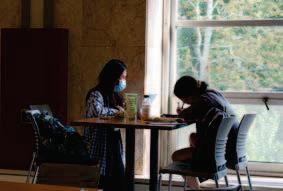

Lafayette College reported widescale labor shortages and difficulties hiring truck drivers, which have led to product delays and shortages.
Other dining facilities across
the country have had to limit their hours, such as The Commons at Duke University, or reduce service capabilities, such as catering services at Washington State.
BC Dining has been consistently kept up to date on the status of shortages in order to adapt accordingly, Williams said
“Since early in 2021 our vendor partners have kept us informed about labor and raw material shortages through our regular communication,” he wrote. “We have been developing contingencies and alternative product substitutions.

Newton Hosts Vaccine Clinics at Both High Schools
B Y E LIZABETH S CHWAB
For The Heights
A tiger-striped “Welcome Back Newton North!” sign welcomed visitors back to Newton North High School on Sept. 11 for a vaccine clinic.
Just an 11-minute drive away, Newton South High School held a second vaccine clinic.
The Newton North cafeteria and Newton South gymnasium were transformed into vaccination clinics, offering vaccines for people ages 12 and up from 8 a.m. until 12 p.m.
“Our goal is for our entire community to work together to stop the spread to youngsters who are not eligible to receive a vaccine and others who are immunocompromised or face health challenges,” Mayor Ruthanne Fuller said in a commu-
nity update on Sept. 2.
The City of Newton will host two more vaccine clinics at the high schools on Oct. 2. Both clinics will again be open from 8 a.m. until 12 p.m.

Patients can register in advance, choose a school location, and schedule a time slot for their vaccine online.
Walk-in appointments are also accepted, according to Fuller’s statement.
While pharmacies including Keyes Drug in Auburndale, Union Pharmacy in Newton Centre, CVS, and Walgreens have vaccines available to the public, Newton resident Praju Vikas Anekal chose to get his daughter vaccinated at the Newton North clinic instead.
“I have no reason not to go to a pharmacy, but given a choice between the two, the schools are prob-
ably a bit more comforting and more open environments,” Anekal said.

Anekal and his daughter, Arianna Anekal, recently moved from New Zealand and have been living in Newton for about two weeks.
At the time they left New Zealand, Anekal said those under 16 were not yet eligible for the vaccine.
Arianna got her first dose in New York when they first moved to the United States.
Shortly after moving to Newton, it was time for her second dose.
“We knew that the US had it approved for 12-year-olds, so one of the first things we did when we got there was to get that first dose,” Anekal said.
Anekal was one of the few people who showed up at Newton North to receive a vaccine.
The number of residents who went to Newton South for vaccines
was also lower than expected, nurses at the clinic said.
“I was honestly expecting more people,” Anekal said. “I think we came in a bit early, and it was seamless.”
In addition to making vaccines easily available to combat the virus, Fuller’s mask mandate for all indoor public places in Newton went into effect on Sept. 2.
The Newton School Committee also passed a vaccine mandate for all school staff on Sept. 1, and Newton Public Schools is requiring students, staff, and visitors to wear a mask while indoors or on school buses.
“Masking helps stop the spread so that we can continue to frequent the businesses we love, our kids can be in school in-person, our vulnerable residents can avoid a breakthrough case, and we can all live our lives,” Fuller wrote in a
community update. “[Students] are heading back to school in-doors. ... Wearing masks when we’re indoors in public places helps protect them.”
Parents, such as Jay Baksha, are hoping to protect their children with the vaccine as schools open up this fall.
His daughter, Riddhe Baksha, is a middle school student who just turned 12 in August.
She received her first vaccination at the Newton North clinic on Sept. 9.
When searching for a place to get Riddhe’s first dose of the vaccine, Baksha emphasized the comfort he felt within the school’s environment.
“We were thinking about going to a clinic, but we happened to see that they had shots here,” Baksha said of the school’s clinic. “Students just want to be back in person.”
NEWS A2 MONDAY, SEPTEMBER 20 , 2021 THE HEIGHTS
MOLLY DENNING / HEIGHTS STAFF
Two students working at a table in Carney’s dining hall in McElroy Commons.
Espresso Your Faith Week 2021 will take place this week from Monday through Friday. The week-long celebration of faith will feature various events, including coffee and donut socials, praying the rosary, live music, DIY tie-dye shirts, and a candlelight vigil.
The BC September Blood Drive, sponsored by the American Red Cross of BC, will be held Tuesday through Thursday in the Vanderslice Cabaret Room. Donors can visit the American Red Cross registration site to schedule an appointment.
Boston College Family Weekend will be held from Friday to Sunday. Families are invited to explore the Heights and connect with other BC families as well as faculty and University leaders.
1 2 3 This Week’s Top 3 Events
MOLLY DENNING / HEIGHTS STAFF
BC Dining workers prepare drinks and food at Hillside Cafe on Lower Campus.
Vaccination Rate: 77 percent The City of Newton as of Sept. 14 Upcoming vaccine clinics: Newton North High School - Oct. 2, 8 a.m. to 12 p.m. Newton South High School - Oct. 2, 8 a.m. to 12 p.m. OLIVIA CHARBONNEAU / HEIGHTS EDITOR
Gardening Meets Greek Gods in ‘Hurricane Diane’
By margaret Doheny For The Heights
What do a Greek god fighting for climate justice and upscale housewives from New Jersey have in common?
Home landscaping.
Pulitzer Prize finalist Madeleine George’s unconventional comedy, Hurricane Diane at the Huntington Theatre Company shows that suburban housewives can be just as tough as the ancient god Dionysus when it comes to the curb appeal of their houses.

In the comedy, Dionysus, shortened to “Diane” (Rami Margron), comes down to earth as a lesbian gardener to put an end to the envi-

ronmental damage humans caused. As the Greek god of vegetation and fruitfulness, her ultimate goal is to reverse the damage done to the climate and planet. By establishing gardens that would allow the population to live solely off of Earth’s resources, she would help eliminate mass production of food, heat, and energy, which are harmful to the environment.
The play takes place after the devastation of Hurricane Sandy, and Diane is pressured to accomplish her goal before another storm hits New Jersey. Attempting to go garden by garden, Diane begins her mission by trying to seduce her most stubborn opponent—housewives in New Jersey.
In the setting of four suburban moms’ identical kitchens, Diane tries
to convince the moms to rip out their lawns and backyards that have no environmental benefits and replace them with features that will replenish the ecosystem.
She tries to instill a holistic livingin-harmony-with-Earth approach to gardening, an aspect the housewives were not concerned with when they hired a landscaper. Diane suggests including elements that are beneficial but not as visually appealing, such as permaculture and paw-paw trees.
Beth Wann (Marianna Bassham), is the weakest out of the four housewives in standing up to Diane. She leans on the quirkier side and is the first to cave when Diane pushes her changes onto Beth’s garden.
Despite working for HGTV Magazine, Renee Shapiro-Epps (Kris Sidberry), is more inclined to the environmentally friendly lifestyle that Diane wants to incorporate into their neighborhood.
Another housewife, Pam Annunziata (Jennifer Bubriski), is your cheetah print–wearing soccer mom, who is quite literally prepared for anything, including a Greek god coming down to Earth.
Finally, Carol Fleischer (Esme Allen) is the ringleader of the four moms. She is clean-cut, works in compliance, and is hell-bent on having her picture-perfect HGTV garden. No battle in ancient Greece could have prepared Diane for Carol’s convictions.
As hard as Diane tries she cannot
convince Carol to give up her dream of a perfect, picturesque front lawn.
In the end, Carol chooses the visual appeal of her home over helping the planet. Not even a Greek god could sway her into being more mindful of how she treats the environment.
Hurricane Diane marks the first live in-person performance at the Huntington Theatre in over a year due to the COVID-19 pandemic. Knowing that not everyone is comfortable with attending in-person performances yet, the Huntington will be streaming a specially recorded version of each performance on its website. The digital version is now available. Tickets for both the digital and in-person performances are available on the theater’s website through Sept. 26.
In 2019, Hurricane Diane received
Intelligence, published in 2014.
Jenny Koons, the director of Hurricane Diane, brought to fruition the humorous script of George. Through her direction, the actors balanced the witty lines of Hurricane Diane with the imperative matter of the physical damage to Earth and its natural resources. Overall, Hurricane Diane serves as a commentary on where the priorities of individuals lie when it comes to conserving the Earth. The play leaves the viewer questioning their own impact on the planet and will hopefully lead to a discussion about the harmful effect of human nature.
Cultural Council Accepting Arts Grant Applications
By Lydia Boer For The Heights Anna Tripodi For The Heights
Newton Cultural Council (NCC) is now accepting grant applications to fund local arts, science, and humanities projects in the city.
“These grants are extremely important because they support the local arts and culture sector in our community,” Paula Gannon, director of Newton cultural development, said. “Every year, the decisions on who to fund are made by local people.”
Grants are awarded to projects that have a public benefit, including performances, exhibits, or lectures. In the past, grants have been capped at $1,500, according to NCC’s website. NCC does not fund programs in Newton Public Schools.
Funding local projects also helps to bring Newton residents together through art, Gannon said.
The Massachusetts Cultural Council (MCC) provides funding to the arts community in Newton and cultural councils across Massachusetts. Gannon said Newton is fortunate that Mayor Ruthanne Fuller matches MCC’s funding in Newton every year.
As a performer or artist, Gannon said sharing work with the public is about both individuality and a source of work.
“I think, for [the artists] to be able to get back out there, it’s such a relief to them and it feels so good that they’re going to find a way to do it, and we’re very, very happy to help them and support them through funding,” Gannon said.
Applications on the MCC website opened on Sept. 1 and will close on Oct.15.
This year MCC is utilizing a new online system for grant applicants. Gannon said she foresees applicants having trouble with the system, but that it will be more user friendly once they understand how to use it.
At the end of December, the council will have a list of who will receive the grants and how much money is allocated to each project, Gannon said. The applicants will hear by mid-January if they have received a grant.
Remaining at home during the pandemic, artists were afforded more time to create art and start new projects, Gannon said. Gannon predicted that this will result in a steady number of incoming applications.
There is a large diversity among applicants, Gannon said. The majority are adults, or adult organizations such
as Newton Community Pride. The NCC receives a variety of applications from individuals, organizations, and even high school students from Newton, Gannon said. College students from BC are eligible to apply for a grant if their application meets all the requirements, she said.
Last year, the council approved 58 grants out of an applicant pool of 64. This year, Gannon said NCC has about $50,000 to award to artists and organizations in the community, compared with $40,000 the previous year.
NCC recently funded the public arts exhibition Newton Out Doors through the nonprofit group Newton Community Pride. In this exhibit, 25 wooden doors painted by local and regional artists have been placed around eight of Newton’s village centers.
“We help to support that program,
which, again, supports all the artists being paid for this initiative, which is really important, especially coming out of COVID,” Gannon said. “Our visual arts and performing arts, and the arts sector itself, has been extremely impacted by COVID, and it’s going to take a lot to be able to get this sector, back up and running.”
One prominent grant recipient from last year is Sandeep Das, Gannon said. He is a world renowned educator and Tabla player, which is a type of Indian drum. His project involves instructional videos about rhythm and classical Indian music.
“He did a presentation and performance this year, which the Newton Cultural Council helped to fund,” Gannon said. “It was really exciting for us to be able to bring that experience to Newton and to have folks enjoy this different type of music.”
Fuller and Sangiolo Move Foward in Mayoral Race
By Julia Remick Metro Editor
Mayor Ruthanne Fuller and former city councilor Amy Mah Sangiolo won the Newton preliminary mayoral election Tuesday, securing a place for their names on the ballot for the Nov. 2 election
Fuller received 5,926 votes, which is 54.7 percent of the votes, according to unofficial results from the city.
Fuller is seeking a second term, after her election as the first female mayor of Newton in 2017.
“I’m honored by tonight’s result and the strong support our work received across Newton,” Fuller wrote on Facebook and Twitter. “We won 7 of Newton’s 8 wards. I’m happy to report that, as the top vote getter, we advanced to the General Election by a margin of more than 15% over our closest competitor.”
Sangiolo surpassed Fuller in Ward 4 by 425 votes. Sangiolo served as the city councilor at-large in this ward from 1997 until 2017. In Ward 3, Fuller received four more votes than Sangiolo.
Sangiolo received 4,247 votes, or 39.2 percent of the votes. Sangiolo also ran in 2017, placing third in the 2017 primary election behind Fuller and Scott Lennon.
“It’s official! We’re moving on to
the general!” Sangiolo wrote on Facebook and Twitter. “Thank you to all of our many supporters who turned out to vote today! We’re excited that 39% of Newton voters chose the candidate that will listen to all Newtonians and put the community first!”
The third candidate, Albert R. Cecchilini, will not be on the ballot in the Nov. 2 election. He received a total of 661 votes, or 6.1 percent of the votes. The attorney, who also ran
in the 2017 mayoral race, was the sole Republican candidate.
There were a total of 10,834 votes cast in this election, which is 17 percent of registered voters in Newton. Voting for the preliminary election took place on Tuesday from 7 a.m. until 8 p.m.
The elections for Newton mayor, 24 members of the city council, and eight members of the school committee will be held on Nov. 2.
M
A3 MONDAY, SEPTEMBER 20, 2021 THE HEIGHTS
ETRO
an Obie Award for Excellence in Off-Broadway Theatre. George is also a Pulitzer Prize finalist for her other play, The (curious case of the) Watson
PHOTO COURTESY OF NILE HAWVER
The three housewives passionately converse over coffee in the kitchen.
PHOTO COURTESY OF NILE HAWVER
The cast of ‘Hurricane Diane,’ playing at The Huntington until Sept. 26.
MAGAZINE
A Guide To Making the Most of Your Meal Plan
BY MC CLAVERIE Asst. Magazine Editor


Going into my second year at Boston College, I felt that I had a pretty good grasp on how to navigate BC Dining. The Rat has the best muffins, Stu is superior to Mac (yes I lived on Upper as a freshman but would occasionally
here are my tips to getting the most out of the BC Dining experience.
Three Main Dining Halls
There are three main dining halls on campus that each serve a different population of students. McElroy Commons, or Mac, which is home to Carney’s and
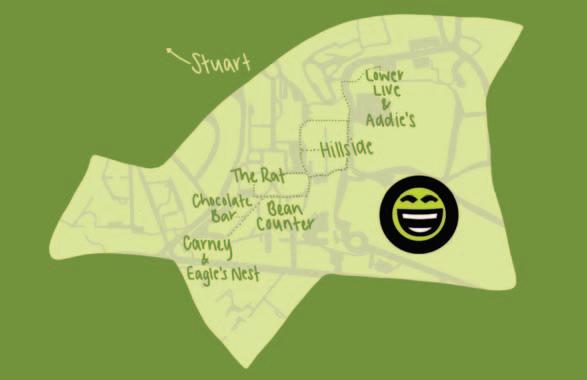

different options, and I was surprised by the amount of open seating. If you don’t want to wait for a table, I recommend stopping by.
No matter what grade you’re in, you’ve probably heard about Eagle’s Nest, or Eagle’s, which has returned to its pre-COVID-19 form. Open from 11 a.m. to 3:30 p.m. on Mondays through Fridays, Eagle’s offers make-your-own salads, bowls, and sandwiches. Since Eagle’s no longer relies on GET Mobile to serve students its food, the lunchtime crowds have certainly returned in full force. Pro tip: wait out the after-class rush by 20 minutes, then grab your Eagle’s food to avoid the long lines!
Next up is Stuart Dining Hall, which is located on Newton Campus. Like Carney’s, Stu is open for three meals a day, seven days a week, and mainly serves freshmen. Unlike the other major dining halls on campus, Stu has a smaller and more intimate feel. The cozy atmosphere—enhanced by the booths and famous “Yellow Room”—makes Stu the perfect place for overwhelmed freshmen to unwind and enjoy a meal.
venture over to Newton Campus to eat at Stu), and CoRo Cafe coffee is perfect for mornings after a late-night study session. Everything I knew changed when I walked into Lower for the first time this year. I was taken aback by the many lines, no employees directing me where to go, and who knew they used real plates?
Whether you are a freshman who is still learning where all the dining halls are or a senior who lived off campus last year and is re-adjusting to on-campus dining,
Eagle’s Nest, mainly serves freshmen who live on Upper Campus and sophomores who live on CoRo. Carney’s, on the third floor of Mac, is open for three meals a day, seven days a week. Walking into Carney’s for the first time this year threw me for a loop, as it is currently being renovated. Despite the temporary serveries, the food is still the same, and it’s a great spot to grab a quick meal between classes since the lines are typically pretty short. There are four lines with
Even though students who live on Newton are definitely biased, my friends on Newton raved about the specialty meals that Newton served, such as toasted ravioli, churros and chocolate, and even lobster. Last semester, my friends and I traveled to Stu to celebrate a friend’s birthday to simulate “going out.” Since we had to take the bus, it felt like we were off campus. Even if you live on Upper, I recommend taking the trip to Stu at least once during your freshman year—you won’t regret it.
Finally, Lower Live is the largest of
four main stations including a “North End Blend” station that serves a variety of pasta and the Screamin’ Eagle steak and cheese subs station. Even though Lower is always changing its offerings, if you don’t see anything you like—which happens from time to time—make sure you don’t miss the customizable salad bar, daily soups, and self-serve rice cooker.
It
Cafes and Coffee
Located upstairs inside of Lower is The Loft @ Addie’s, which serves customizable poke bowls, burrito bowls, and flatbreads and is open from 5 p.m. to 9 p.m. Sunday through Thursday. If you are looking to mix up your mealtime routine, definitely check out Addie’s, where you can also order your meal on GET Mobile. The upstairs seating near
If you are a caffeine addict like myself, then starting your day off with a high-quality cup of coffee is crucial. The Rat, located in the basement of Lyons, is my favorite place to grab coffee on Main Campus. The Rat is open Monday through Friday from 8:00 a.m. to 3:00 p.m. for breakfast and lunch. It serves hot New England Coffee brand coffee
Taylor Connects Public Health with Positive Parenting
Taylor, from A1
Her latest endeavor sprouts from the intersection between these—she is finding new and effective methods to disincentivize parents from hitting and spanking their children, a field of study that is often taboo, she said.
“She is tireless and compassionate, and this has enabled her to persist in a field of inquiry that draws much controversy,” Belle Liang, a professor in the Lynch School of Education and Human Development, said.
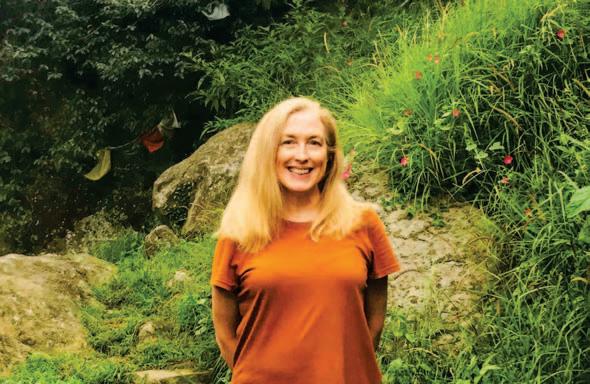
Taylor was born and grew up in Massachusetts. Her curiosity in the sciences began in the eighth grade when she was introduced to the scientific method and how to pose hypotheses, she said. Taylor studied biology at Cornell University and did research at its medical school during her junior year.
After leaving college with this scientific background, she took time off to volunteer for a crisis line for adults who had experienced domestic violence, sexual assault, or who were children of abuse. It was this pivotal experience that exposed her to real-world cases of trauma and mental health, as well as the linkage between the two, according to Taylor.
Taylor then went to Boston University, where her experiences in science, mental health, and trauma converged.
“I found it interesting because it focuses on prevention and how we can actually prevent trauma and abuse for children, so they have a better chance at happier lives,” she said.
While studying for her master’s of public health and epidemiology, she was also interning at South Boston Community Health Center. There, she heard people speak about mental health issues and found the intersection between public health and mental health.
After receiving her master’s degrees, she worked as a research associate at the
Stone Center for Developmental Services and Studies at Wellesley College, specializing in violence prevention. This work catalyzed Taylor’s decision to pursue her Ph.D., as she realized that she wanted to be able to design her own research projects.
It was during her time as a Ph.D. student at the University of California, Los Angeles Fielding School of Public Health that Taylor’s current research focus on children really began. While at UCLA, a key study came out verifying that there was an abundance of evidence that children who experienced physical punishment were at a much higher risk for experiencing actual physical abuse as legally defined, as well as displaying more aggressive behavior. Additionally, children who are physically punished would be at higher risk for mental health and relationship challenges down the line.
The impacts of physical punishment on a child nearly paralleled the impacts faced by adults who experienced physical abuse, Taylor said. Uncovering the prevalence and lack of regulation regarding physical punishment on children pushed Taylor to question its relationship with mental health and development.
“Generally speaking, being exposed to violence isn’t helpful for children and can raise risks for these issues—antisocial behavior, more mental health problems like depression and anxiety, seeing violence as normative, being more violent, or future victimization,” she said.
“Not all children will suffer these repercussions, but there are greater risks to suffer from them.”
With this revelation, Taylor’s career pivoted. Using her public health background, she began researching how disincentivizing the use of punishment on children and encouraging positive parenting can lead to a host of better outcomes down the line.
“It’s our responsibility as a society to move people away from that behavior and towards behaviors that are healthy for children,” she said.
In 2005, Taylor began teaching at the Tulane University School of Public Health and Tropical Medicine, where she focused her work on the relation of adverse childhood experiences to public health. Taylor also centers her research on solutions to these issues by focusing on violence prevention. She co-founded Tulane’s Violence Prevention Institute, which lends a broader focus to her work.
Since coming to BC a little over a year ago, Taylor has continued to research her current question of how to prevent violence that impacts children. Her experience and commitment to creating societal change through impacts on children has already earned recognition at BC.
“Dr. Cathy Taylor is one of the most diligent, principled, and conscientious researchers I know,” Liang said. “She is passionate about doing research that serves families and children and has worked for most of her career to raise awareness about the insidious effects of corporal punishment … her work is so important, and Boston College is so fortunate that she has joined its faculty.”
Her current research focus, which is funded by the National Institutes of Health, is also geared toward understanding what contributed to the normalization of physically punishing children in the United States and how to go about shifting those norms. These questions culminated in her search for universal programs to share with parents that will inform them on such topics and take the temperature of the current climate of how parents currently consider these problems.
One of Taylor’s broader findings is that the United States does not provide parents sufficient parental support. Although current societal norms assume
parents always know how to manage difficult child behavior, parents are often left to fend for themselves in finding
test the efficacy of providing resources to parents with the aim to prevent violence. Participants included over 800
effective ways of managing this kind of behavior, Taylor said.
“If parents were taught growing up that hitting works and did not learn from those strategies, they can pass [that] on for generations,” she said.
In order to raise healthier, happier children, distributing materials that teach positive parenting skills is key, Taylor said.
Specifically, Taylor is interested in understanding who parents turn to when in need of parental advice and how these touchpoints can help discourage the use of physical punishment. One example, she said, is a pediatrician.
“I’m learning about [pediatricians’] attitudes regarding parenting and thinking about how to use them to discourage hitting and find new strategies,” she said. “It posed a question of how I can work with them to better think through this issue.”
To get at this, Taylor set up a randomized control trial in New Orleans to
mothers who were beneficiaries of the Women, Infants, and Children nutrition program. Her team designed the project in such a way that there would be two randomized groups that would each try a different parenting program, one being Play Nicely and the other being Triple P.
Her team’s goal is to see whether these programs are helpful for parents learning how to use positive discipline strategies more frequently. Since they are brief and could be offered in pediatric clinics or other health care and social services settings, these programs have the potential to reach many parents around the country who do not have access to basic parental information.
“The more parents that have those tools, the more likely it is to shift societal norms to use other strategies [of discipline],” Taylor said.
the three full-service dining halls. Located in Corcoran Commons, Lower mainly serves sophomores, juniors, and seniors living on Lower Campus.
features
A4 MONDAY, SEPTEMBER 20, 2021 THE HEIGHTS
GRAPHIC BY OLIVIA CHARBONNEAU / HEIGHTS EDITOR
MOLLY BRUNS / HEIGHTS STAFF
Students return to the normal atmosphere of BC dining, such as the salad bar.
PHOTO COURTESY OF CATHERINE TAYLOR
Taylor connects mental health and public health to promote positive parenting.
Addie’s is a great spot to eat or do work with friends during the week, and the atmosphere is less chaotic than downstairs.
as well as something that can be hard to come by at BC dining halls—iced coffee.
BY LAUREN JASEN Heights Staff

Imagine Dragons was certainly on an upward trajectory for a while after releasing their breakthrough album Night Visions in 2012, which sold more than five million copies worldwide. The album’s hit single “Radioactive” reached No. 1 on Billboard charts. Soon after, the band released its 2017 album Evolve which was nominated for two Grammys. The band set very high standards for itself after releasing Evolve. Unfortunately, these expectations were not matched this time around. Mercury - Act 1, released Sept. 3, does not have the cohesiveness that one would hope for in an album that has been in the works

for a few years now.
Lead singer Dan Reynolds undoubtedly has one of the more unique voices in contemporary music. His powerful falsetto and raw vocals are apparent on the album, but at times they come off as more unpolished than one would hope for.
“Easy Come Easy Go” falls back on repetitive lyrics as it nears the end of the song, repeating loose variations of the same line over and over again: “Guess that’s just the way it goes (Guess that’s just the way it goes) / Easy come, easy go.” The songs that have a better musical composition lack any thoughtful lyrics, like “#1”. While it is an improvement in terms of melody, the theme of the song is “I’m my own number one.” The message of self-confidence might have been the
original goal, but the only thing it really illuminated was that this album certainly was not their “number one”.
The one exception is “My Life,” which is worthy of being put on a list of the band’s best tracks. This piece certainly encompasses the authentic Imagine Dragons sound—equally dynamic and sentimental. This is the clear gem of the album, but the rest of the songs do not share the same kind of musical sophistication and lyrical depth.
The band’s intentions were admirable, but the execution was lacking. The cover of the album depicts a man falling—a fitting image because this album was a fall for them. Fans will now have to patiently wait for Imagine Dragons to produce something worthy of their exceptional talent.

The Band CAMINO Channels Pop-Punk on Album
BY KIERAN WILSON Heights Staff
The Band CAMINO’s self-titled album has been a long time coming. The group, consisting of Jeffrey Jordan, Spencer Stewart, and Garrison Burgess, formed in 2016 and found success with its songs “Daphne Blue” and “See Through,” both of which appeared on the band’s 2019 album tryhard


This past year was shaping up to be a big one for the band, as it was expected to release its album and slated to open for both 5 Seconds of Summer and Dan + Shay until the tours were postponed. The band clearly made good use of its down time, though, and it shows on its new album. The Band CAMINO,

released on Sept. 10, showcases the band’s pop-punk and rock leanings while managing to convey equal parts heartbreak and hope.
“1 Last Cigarette,” which was released as a single earlier this year, is a high tempo track about someone being out of control and down on their luck. Driven by heavy, pounding drums and a catchy electric guitar riff, the chorus shows off the band’s pop-punk influences and concludes with, “I lost my shit now all I got left / Is ten missed calls and one last cigarette.”While these songs from The Band CAMINO are high-octane rock songs, the album is not without intense moments of self-reflection and intimacy from the band.
“Sorry Mom” is one of these, and it is

essentially one long heartfelt apology to the singer’s mom. The song consists mainly of a single acoustic guitar, the only one that notably appears on the album, which creates a very sincere feeling and displays The Band CAMINO’s immense talent for taking personal and relatable experiences and sharing them with the world.



“Roses” might be the song that best exemplifies The Band CAMINO’s debut album. It features the band’s easily recognizable sound with a memorable synth and driving drums. Lyrically, this track ties the band’s fantastic debut album together well, in that it recognizes that life isn’t always perfect, but that doesn’t mean you can’t “Stop and smell the f*****g roses.”
MUSIC
MUSIC
BY GRACE MCPHEE Heights Staff
There was a specific brand of indie pop that dominated the streaming platforms of preteens everywhere from 2016 to 2017. Over-synthed, drum-heavy songs about love—just vague enough for 13-year-olds to project their own dreams upon, yet still poppy enough to enter the weekly Top 40 slots. These songs gave birth to an entire generation of young adults with mediocre music taste.
Despite the alarming abundance of this genre of music and its profound genericness, it somehow survived the turn of the decade in the form of LANY, the truly abysmal poster band for lazy sell-out music, and the band’s aptly and


ridiculously named fourth studio album, gg bb xx, released ono September 3.



gg bb xx literally stands for nothing— an assertion that lead vocalist Paul Klein has confirmed. So, at the urging of LANY themselves, listeners should engage in a sort of DIY process when listening to the album, defining what the album means to themselves when listening. Considering the interchangeable nature of every song on gg bb xx, it’s not an unreasonable request.
Listening to the 38-minute album, it’s difficult to know where one track ends and another begins. It feels like any one all-lowercase song could be plucked off the album, the song order reversed, and put back in place without anyone noticing. Tracks range from boring to borderline
laughable. “somewhere” takes the musical shape of a flavorless sad-boy tune while “’til i don’t” is one of the funnier songs.
On the chorus of “’til i don’t,” Klein sings “Gonna be there for you, through the highs and lows / But I’ll never say ‘Forever’ ’cause it’s too much we don’t know / But I promise that I’ll love you, promise that I’ll love you ‘til I don’t.” In what world is that supposed to be sweet? What person hears this song and thinks “This is exactly the feeling I’ve been unable to articulate?”
These are all questions with no answers, but there’s one thing that need not be questioned: gg bb xx isn’t very good. It’s a dull recycling of music that’s already been written and recorded far too many times to be seen as anything other than what it is: radio filler.
Drake’s Unoriginal ‘Certified Lover Boy’ Disappoints
BY ORLINKA KEREERE For The Heights


Drake’s new album, Certified Lover Boy, was sure to be his finest album yet. But among dreary beats and lyrics full of overdone bragging, it quickly became clear that there would be no “wow” factor on the album. Despite 21 songs and 15 featured artists, the album fell short of being a masterpiece.
The album, released on Sept. 3, starts off with “Champagne Poetry,” a meaningful song layered with references to the birth of his son, Adonis Graham, and protests against police brutality. The album slowly transitioned to “Papi’s Home,” a diss track to rappers who are “doing weak features for a pop artist ’cause

they popped down,” implying that rappers will rap in teeny verses in pop artists’ songs just to gain a small amount of short-lived recognition. “Fair Trade,” which features Travis Scott, showed some promise with its heavy beat, but it was no “SICKO MODE,” another song by Travis Scott and Drake released in 2018.
Not all songs missed the mark on the album, though. While some songs rely on the standard rap formula, they were still head-bob worthy. “You Only Live Twice,” featuring Lil Wayne and Rick Ross, is essentially the sequel to Drake’s “The Motto,” which also featured Lil Wayne on Drake’s 2011 album Take Care.
“The Motto,” however, will be marked in the books as a smash hit that peaked at No. 2 on the Billboard Hot 100 Year-End Chart. But









at this point, the majority of Drake and Rick Ross’ collabs all sound the same.
Drake’s been climbing the charts over the course of the past decade, but on Certified Love Boy, Drake fell from his pedestal—while other rappers have risen to the challenge of expanding the rap music scene. Without a doubt, the album was not Drake’s greatest show of talent.
While Drake’s latest album runs tired with unoriginal songs, Donda, Kanye West’s latest work, is an experimental album that mixes rap with gospel. While it may be too radical for some, it’s new and West deserves praise for challenging the rap genre. Meanwhile, Certified Lover Boy is rife with songs that all scream “been there, done that.”

ARTS A5 MONDAY, SEPTEMBER 20, 2021 THE HEIGHTS
PHOTO COURTESY OF INTERSCOPE RECORDS
MUSIC
PHOTO COURTESY OF ELEKTRA
‘THE BAND CAMINO’ THE BAND CAMINO
DISTRIBUTED BY ELEKTRA RELEASE SEPT. 10, 2021 OUR RATING
PHOTO COURTESY OF POLYDOR
‘CERTIFIED LOVER BOY’ DRAKE DISTRIBUTED BY REPUBLIC RECORDS RELEASE SEPT. 3, 2021 OUR RATING
MUSIC Lany’s ‘gg bb xx’ Relies on Overdone Sell-Out Pop Music PHOTO COURTESY OF REPUBLIC RECORDS ‘MERCURY - ACT 1’ IMAGINE DRAGONS DISTRIBUTED BY INTERSCOPE RECORDS RELEASE SEPT. 3, 2021 OUR RATING ‘GG BB XX’ LANY DISTRIBUTED BY POLYDOR RELEASE SEPT. 3, 2021 OUR RATING ‘Mercury - Act 1’ Falls Short of the
Work
Band’s Previous
Bryce Vine Revives Stokes Set With a Stunning Show
BY LAUREN JASEN Heights Staff
Stokes Lawn. By day, a charming green area where Boston College students study, enjoy their lunch, or throw a frisbee with friends. By night, for one night in September, it transforms into an effervescent amphitheater filled with neon lights and a lively crowd of concert-goers.
The annual Stokes Set concert put on by the Campus Activities Board (CAB) Saturday night was a splendid night of live music.
DOUBLECAMP, a band out of Nashville, began the evening. The indie group was led by Joe Neary and Jordan Burmeister. It appeared as though they made a quick stop at the BC Bookstore before their set, as they were decked out in BC apparel.
The group was reminiscent of Rex Orange County but with a slight southern flair, and the lead singer had a rich sound that was almost Adam Levine–like. “Confetti” and “Dreamers” were both standout tunes, but its entire set was impressive.
DOUBLECAMP is newer on the music scene, but this performance made certain that it has a very promising future in the industry.
As the sun slowly set on Chestnut Hill, then came the main act of the night: Bryce Vine. A singer and rapper with distinct R&B influences, Vine has continued to gain a considerable following ever since releasing his first two EPs, Lazy Fair (2014) and Night Circus (2016).
His first album, Carnival was also a success, featuring the hit singles “La La Land” and “Drew Barrymore,” which both made the Billboard Hot 100 list.
A former student at Berklee College of Music, Vine’s performance was particularly special, as he made his return to Boston. It was at Berklee that he took on the stage name of Bryce Vine—“Vine” being short for vinyl records.
Vine’s set featured a delightful mixture of songs that were both old and new. Some seemed to be more unfamiliar tunes to the audience, while others like “Sunflower Seeds” and “Glamorama” had the crowd enthusiastically singing along.

He also performed some tracks from his latest EP, Problems (2020), as well as his most recent collaboration with lovelytheband, “Miss You A Little,” which came out in August. He said this was currently his favorite song to perform and it
Bryce Vine energizes the crowd with fan favorites like “Sour Patch Kids,” “Drew Barrymore,” and “Guilty Pleasure.”
showed.
Vine’s encore included “Drew Barrymore,” “Guilty Pleasure,” and “Sour Patch Kids,” which were all fan favorites.
It was special to see so many students gathered together to enjoy the thrill of live music once again.
Vine said he was especially enthusiastic about being on stage again after months of not being able to perform for an audience.
Whether a big Bryce Vine fan prior to the concert or just experiencing his music for the first time, it was an exhilarating evening for
everyone under the stars.
Vine’s music isn’t particularly moving, but his performance was certainly entertaining. At the least, it probably inspired some students to head back to their dorms and munch on some Sour Patch Kids candy with their friends.
McMullen Highlights Rodrí guez’s Impressive Range
BY KATHERINE CANNIFF Assoc. Arts Editor

completed by the Cuban modernist painter Mariano Rodríguez.
Many of the pieces are meeting for the first time since they were
Rodríguez’s connection to the Cuban Revolution has prevented his work from being shown extensively in the United States.

The new exhibit, which will remain open until Dec. 5, 2021, provides visitors an exclusive look into the evolution of Rodríguez’s work with over 140 paintings and drawings from the artist.

Elizabeth Goizueta, a professor in the Hispanic Studies department and the exhibition’s curator, spent eight years conceptualizing and organizing the groundbreaking exhibit.
In 2013, Goizueta encountered Rodríguez’s work on a trip to Cuba for a different project and was inspired to share the complete breadth of his work—spanning from the 1930s to the 1980s—with an American audience.
The exhibition is making history as the first major exhibition of Rodríguez’s work and includes works that have never been seen before.
Kate Shugert, manager of publications and exhibitions at the McMullen Museum, worked alongside Goizueta as they collaborated with Alejandro and Dolores Rodríguez, Rodríguez’s two children who manage his estate, to highlight pieces from the artist’s archive that had never been seen by the public before.
The exhibit groups Rodríguez’s work into the different styles he explores in each decade as he engages with various artistic movements, including fauvism and abstract expressionism.
But, his works are connected by Rodríguez’s continuous exploration of Cuban identity and recurring motifs of roosters, vegetation, and peasants.
The organization crafts a historical storyline of his career that’s meant to make the range of his artistic works more accessible to visitors, Goizueta said.
“I hope that people understand that we shouldn’t just label each other and get stuck on one image or one interpretation,” Goizueta said. “Artists evolve, their imagery evolves and takes on different forms and different interpreta-
tions, much like people do.”
Once through the museum’s glass doors, the white walls are alight with the vibrant colors Rodríguez used to shape the dynamic, exaggerated bodily forms he painted during his formative artistic years in Mexico.
The pieces hanging in the back of the second floor gallery possess obvious political meaning as Rodríguez protests the removal of Cuba from the Organization of the American States. An American flag appears in the background of a canvas crowded with yellow figures—harshly defined against a dark background—who gaze outward to the viewer in a moment of violent confrontation.
A catalogue of Rodríguez’s work has also been released as an accompaniment to the exhibit—compiling images of his paintings and scholarly essays that delve into his work.
The publication, which is also titled “Mariano: Variations on a Theme,” can be purchased online and is available for browsing in the gallery.
The museum is also offering a variety of events related to the exhibit throughout the semester, including lectures and tours.
The museum hosted an opening reception for supporters of the museum and contributors of the exhibit earlier this month, inviting many family members of the artist.
Shugert described the poignant moment when Rodríguez’s daughter saw a painting of herself as a young child hanging on the gallery wall for the first time as the past and present converged on the painting.
“It really brought home that these are not just beautiful artworks that tell a lot about Cuban artists at a particular time, but these are people’s family members, and it was just so fulfilling to see the closest people in the artworks connect to them again,” Shugert said.
ARTS A6 MONDAY, SEPTEMBER 20, 2021 THE HEIGHTS
LEO WANG / HEIGHTS STAFF
NICOLE VAGRA / HEIGHTS STAFF
Rodrí guez’s exploration of different mediums and styles is currently on display at the McMullen Museum of Art.
The paintings hanging in the McMullen Museum of Art’s new
exhibit, Mariano: Variations on a Theme , have flown from museums and personal collections across Spain, Cuba, and the United States.
The exhibit showcases Rodrí guez’s diverse range of subject matter, from family members to beach scenes to birds.
SCAN FOR PLAYLIST
NICOLE VAGRA / HEIGHTS STAFF
Texas’ Abortion Law Puts Constitutional Rights at Risk

In May, Texas Governor Greg Abbott signed into law S.B. 8, a radical piece of legislation that effectively bans abortion after just six weeks, with no exemptions given for rape or incest. The Supreme Court narrowly voted in a 5-4 decision to formally state that the bill may go into effect on the intended date of Sept. 1. The structure of this anti-abortion bill is not only a radical departure from the legal precedence for abortion rights in the United States, but it is also a stunningly sinister shift in how laws governing the constitutional rights of U.S. citizens are enforced. The Supreme Court was unambiguously wrong not to block this piece of legislation in consideration of both reproductive rights and the precedent set on infringing on other constitutional rights.
On the principle of reproductive rights, S.B. 8 is problematic from both a scientific and social justice perspective. The bill functions to ban abortion, in theory, after the “heartbeat” of an embryo can be detected. Right off the bat, there are two glaring issues with this prohibition that are immediately apparent. First, “fetal heartbeat” is a disingenuous term that is hardly ever used in clinical settings. A heartbeat is never detectable at just six weeks, because there isn’t even a heart at this point in fetal development. What Texas lawmakers are describing in S.B. 8 could better be described as “a group of cells with electrical activity.” This medical reality is a far cry from the mental image of a baby with a beating heart conjured up by anti-abortion rhetoric.

Second, in most cases, it is very difficult to even know that a pregnancy has begun by just six weeks. Since it usually is not possible to pinpoint the date of conception, healthcare providers usually just determine the date to

be the first day of the pregnant person’s last menstrual period. It is usually already four and a half to five weeks from the first day of the last menstrual period to the time when someone usually considers their menstrual cycle to be late. It is functionally impossible to recognize that one is pregnant, decide to get an abortion, make an appointment at a clinic (assuming the pregnant person has access to money, health insurance, transportation, time off from work, and a clinic nearby), and complete the procedure when working within a two-week time frame at best.
Additionally, this optimistic two-week time frame requires assuming that the pregnant person menstruates regularly. A late or missed

all abortions in Texas occur after this six-week mark. It is important to acknowledge that this narrow time frame is a feature of the bill rather than a byproduct—Texas lawmakers are not ignorant of these scientific realities. It is the intention of Texas legislators to completely ban abortion without exactly admitting it outright.

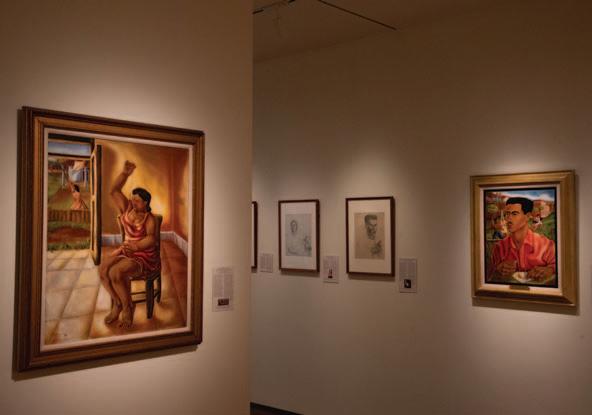
More generally, what S.B. 8 means for this new era of constitutional uncertainty is sobering, not just for people who have benefitted and will benefit from abortion. S.B. 8 was designed in a way that intentionally complicates the ability of the courts to review the constitutionality of the law. In most bills that pass through state legislatures nationwide, people who object to the law are able to challenge it
up abortion providers to a barrage of lawsuits, but also friends, family members, ride-sharing drivers who bring a person to an abortion, and even people who share information with a pregnant person about their options. To add insult to injury, the burden of proof is on the person being sued, not the person bringing the lawsuit, which completely perverts the “preponderance of evidence” doctrine typical of the U.S. legal system. The requirement that the defendant prove that they didn’t break the law, rather than the plaintiff having to prove that they did, makes it much more likely that plaintiffs will succeed and gain their payout as a reward for turning on their neighbors. Each successful lawsuit carries a $10,000 minimum payout. These factors, taken together, create a strong incentive for neighbors to turn on each other.
period can be caused by a wide range of factors that don’t involve pregnancy—using certain forms of contraception, heavy exercise, and even stress can all cause a menstrual cycle to come late or not at all. This reality that many other factors could delay a person’s menstrual cycle serves as another major barrier to abortion access—many people don’t even know that they are pregnant by the six-week cutoff. The unrealistic nature of this time frame is evidenced by the fact that at least 85 percent of




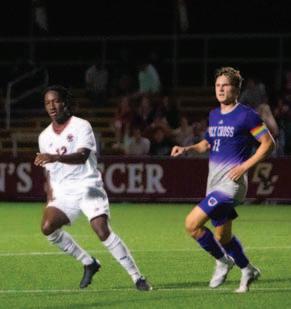
The law’s enforcement mechanism is dystopian—not just because it encourages active surveillance of pregnant people and everyone who interacts with them, but also because of the amorphous nature of enforcement by private citizens. This leaves pro-choice Texans with no recourse to sue to block this bill, because there is no enforcement entity that exists. In refusing to block this shameless exploitation of a loophole in order to circumvent judicial review, the Supreme Court has implicitly endorsed this tactic, sending a signal to other states that they can get around constitutionality by simply devolving enforcement to private citizens. This poses a dangerous risk to other constitutional rights, not just abortion, because it frustrates the ability of judicial review to check the constitutionality of legislation. For example, a state could make it illegal to criticize the governor, as long as dissenting opinions are reported in lawsuits brought by people’s neighbors rather than the government. In the conservative Supreme Court’s excitement to effectively ban abortion, they overturned years of precedent, and potentially put civil and political rights as a whole in danger. y
in court by suing the person or entity charged with enforcing the law—this could be a state Board of Education or state medical board, for example. In the language of the Texas abortion bill, however, it is ordinary citizens who are tasked with enforcing the penalties for carrying out or assisting an abortion procedure. Under S.B. 8, any person who performs or “abets” an abortion, or even reasonably “should have known” an abortion was taking place, is open to lawsuits from any private citizen. This opens
O
A7 MONDAY, SEPTEMBER 20, 2021 THE HEIGHTS
PINIONS
(STEPHEN MOONEY / FOR THE HEIGHTS); (LEO WANG / HEIGHTS STAFF); (NICOLE WEI / FOR THE HEIGHTS); (NICOLE VAGRA / HEIGHTS STAFF).
Top photos, left to right: BC back defender Wil Jacques and Holy Cross midfielder Max Krause run after the ball, Tuesday, Sept. 14; Rapper Bryce Vine headlined Stokes Set and sang crowd favorite “Sunflower Seeds,” Saturday, Sept. 18; DOUBLECAMP opened for rapper Bryce Vine at Stokes Set, Saturday, Sept. 18.
Bottom photos, left to right: BC midfielder Juliette Hijdra attempts to pass the ball against Syracuse midfielder Laura Graziosi, Friday, Sept. 17; BC forward Nell Webber grapples with Syracuse midfielder SJ Quigley for the ball, Friday, Sept. 17; BC midfielder Tyshawn Rose kicks the ball up the field, Tuesday, Sept. 14; The McMullen Museum of Art hosts an exhibit on Cuban artist Mariano Rodríguez, Thursday, Sept.
SOPHIE CARTER
The opinions and commentaries of the op-ed columnists appearing on these pages represent the views of the authors of those particular pieces, and not necessarily the views of The Heights
Sophie Carter is an op-ed columnist for The Heights. She can be reached at sophia.carter@bc.edu.
GRAPHIC BY OLIVIA CHARBONNEAU / HEIGHTS EDITOR
Versus Reality: The American Dream

ANA PIROSCA
“Toto, I have a feeling we’re not in Kansas anymore,” is the first sentence I thought to myself as I landed in Boston for the first time. I thought I was being funny, seeing as I never owned a pet nor did I ever really think of Kansas as a home that I could click my heels and magically return to. Having traveled quite a bit throughout my childhood actually made me feel a bit more like Toto than Dorothy—my parents brought me on every journey they took and I was just there to experience it, being too small to really have an opinion. Yet, the film created an inside joke in my family about our lasting nostalgia for Kansas.
Technically speaking, we weren’t really meant to end up in the middle of nowhere: Manhattan, Kan. But at the same time, we were. After I was born, my family was quick to realize that we could not sustain ourselves in Romania. So, as most Romanians do, we left to seek a better life. We were hoping to be able to find a home, a stable life, and happiness just like my parents saw in The Wizard of Oz. My mom, having previously worked in a lab in Germany, saw the opportunity to work in America as a golden ticket that said “Manhattan.” But she wasn’t quite well informed enough to realize that “Manhattan” was followed by “KS.” The only Manhattan she knew was from Sex and the City. So naturally, getting off the plane surrounded by cornfields was a shock.
My mother’s initial experience of confusing Kansas with New York set the tone for what reality would look like in the following
years. What we envisioned often looked completely different from what actually happened, and this was an especially alienating experience in a time before the internet was readily accessible. But, we were on a chase—one that every immigrant coming to America knows well enough. Through movies and TV shows, many of us feel that America is a promise of a better future, and to some degree, a guarantee of obtaining the American Dream.
While we can debate exactly what the “American Dream” means, for my parents


us because we couldn’t handle potentially feeling let down again.
By the time we (and America) began recuperating from the devastating year, it quickly became apparent that the American Dream is not a foreign object that you simply obtain, it is a game. The game of the American Dream is set up so that people who have distant relatives who came off the Mayflower or weathered Ellis Island have known how to play for centuries at this point. It was occasionally embarrassing and costly to stumble around trying to figure out what it takes to
especially words I could understand in a language that was meaningful to me.
I was growing into a different person than my parents hoped. I knew American culture in a different light because I was surrounded by it more than they were. I wanted different things than they could possibly afford to give me, and after more than ten years of not having visited Romania, they considered me more and more American despite my passport stating otherwise. The things that brought us together, heavily rooted in Romanian pride and heritage, were not as personal to me as they once were.
While my parents focused on survival, I focused on transforming myself into two acceptable versions: one for at school and one at home.

Years later, The Wizard of Oz still brings me a sense of familiarity, like an unspoken inside joke. My family looks different now, and I am not a person to judge whether it’s better or worse than before. The biggest difference, though, is the understanding that “the American Dream” is not what the movies and shows depicted. That popular depiction is an exaggerated view of America through rose-colored glasses for the people who feel they have exhausted every option in the country they were born in.
it was concrete: avoid poverty and give Ana the most opportunities possible to avoid poverty. During the financial crisis of 2008, America failed us for half of our American dream and that set us in motion toward Boston, Mass. (this time we checked the state). It took several years to really understand and cope with the intense emotions that were involved with America failing to meet our high expectations. There was anger. Lots and lots of anger. Though, when we probably needed it most, we refused to ask America to help
consider yourself a player. The infatuation with America that we once held quickly dissipated as we struggled to understand how the game was supposed to work.

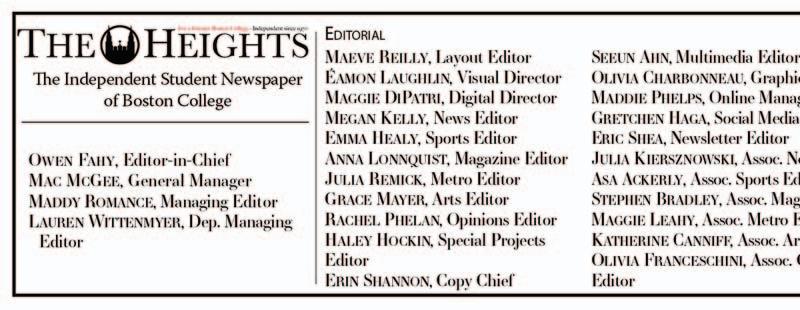
Our American dream was strongly tied to financial literacy because my parents’ experiences in Romania in the ’80s and ’90s showed us that money is an important asset for survival. But I was too small to really know that, and the trauma that they both incurred as a result of the Nicolae Ceausescu regime was past the expression of words,
While it wasn’t easy, my family acclimated to different territories time after time, and my parents especially did their best to do right by me while battling their own expectations for themselves and the rest of America. We now have a home and trust in the system that supported us physically and mentally, and I have been able to join an extensive community of immigrants and attend one of the most prestigious schools in the country. We aren’t merely surviving anymore. We won the game.
The Birds Outside Lower
The discarded food crumbs cluttering the tables outside of Lower attract a wholesome crowd of birds who also visit Lower to dine. Most of the time they keep their distance from dining students, but a few inch closer for crumbs of a blueberry muffin or leftover everything bagel seeds. However silly it may seem, the birds’ charades are a daily ritual that serve as a reminder to enjoy the little things.
The Met Gala
The Met Gala is a prime opportunity to play one of the most entertaining games of all time: WHAT is that celebrity wearing?! Usually ridiculous outfits that go viral on Twitter only hit the stream about twice a month. But, the Met Gala is the jackpot for the ridiculous, the gorgeous, and everything in between.
Desk Chairs
The Boston College Residential Life-issued chairs are a one-way ticket to long-term back problems. In fact, the chairs should also come with a free chiropractic consultation. Overall, the BC-issued chairs score lower on the comfort scale than the Mod picnic tables that leave grill marks on your legs.


Slow Brita Filters
Some Britas are faster than others, and for those cursed with a particularly slow Brita, this struggle hits close to home. Faucets have leaked faster than some Brita filters. Whether the speed of the filtration process has any correlation to the Brita’s quality is yet to be determined, but one thing’s for sure: it’s infuriating. For anyone looking for an alternative, yet equally mundane activity, give watching paint dry a try!

OPINIONS A8 MONDAY, SEPTEMBER 20, 2021 THE HEIGHTS
Ana Pirosca is an op-ed columnist for The Heights. She can be reached at ana.pirosca@bc.edu.
GRAPHIC BY OLIVIA CHARBONNEAU / HEIGHTS EDITOR
“This Is OUr STANDARD.”
BY ETHAN OTT Asst. Sports Editor


Last weekend, Boston College football took on UMass Amherst in what should have almost been a practice game. Instead, the Eagles barely escaped Amherst with a win, and lost starting quarterback Phil Jurkovec for the foreseeable future with a wrist injury during the first drive of the game. On Saturday, however, BC bounced back with backup quarterback Dennis Grosel at the helm for a dominant 28–3 win featuring a strong defense and a booming run game.
BC (3–0) took on Temple (1–2) Saturday for the first time since 2018. The two teams have met 39 times, including 15 games during BC’s time in the Big East. Following Saturday’s game, the Eagles have now beat the Owls a clean 30 times.
Defense Wins Championships—Or Early-Season Games
Following BC’s showing last weekend at UMass, penalties and defense became marked concerns for the Eagles. BC allowed the Minutemen to score 28 points while also giving away 99 free yards on 11 penalties. Saturday’s game against Temple, however, left BC fans with the opposite impression.




The highlight of the game for the Eagles was their unrelenting defensive wall. Although Temple totaled more yards than BC, the Eagles held the Owls to just a field goal. BC allowed the Owls just one fourth down conversion on four attempts, and even more impressively, Temple converted on just three of 14 third downs.
Though BC did not record any turnovers, the Eagles did at one point force a loose ball that the Owls recovered. BC experienced particular success stopping the Temple run game, a feat the Eagles have struggled with in the past. Temple rushed for just 78 yards on 36 attempts, paling in comparison to BC’s 187 yards on only 35 attempts.
Temple’s passing attack fared slightly better, with 161 yards coming through the air. The Owls connected with receivers on 17 of 24 attempts and averaged 6.7 yards per pass, over three times more than their 2.2 yards per rush.
BC’s defense worked to keep Temple from gaining yardage, but also played

cleanly enough to avoid giving the Owls free yards. BC’s penalty total was drastically lower than that of last week and returned to the level of Week One against Colgate, as the Eagles committed two infractions for just 25 yards.
Is the Run Game Here To Stay?
In its first three games of the season, BC has worked hard to develop its run game that was virtually non-existent in 2020. So far, the Eagles have succeeded.
Pat Garwo III emerged from the woodwork last week with 160 rushing yards on 15 attempts, establishing himself as BC’s lead running back. Garwo kept up his reputation Saturday, once again leading the pack in rushing.
With 16 carries, Garwo ran for 49 yards and a touchdown with a long of 20 yards. He only averaged 3.1 yards—far fewer than his 10 yards per rush last week—but his performance was enough to set the tone for BC’s ground attack. Alongside Garwo, five other Eagles recorded rushing yards.
With only two yards fewer than Garwo, Grosel tied with Zay Flowers for the second most rushing yards on the team at 47. Grosel carried the ball five times, once for a touchdown and once for a 19-yard first-down rush.
Flowers only ran the ball once, but his one run was the longest of the game. A backward pass by Grosel ended up in Flowers’ hands, where it stayed for almost 50 yards as the wide receiver exploded down the sideline until he was forced out just short of the endzone.
Alec Sinkfield, Travis Levy, and Xavier Coleman all also contributed their fair share to BC’s ground attack, the three combining for 47 yards. Levy also rushed for a touchdown and opened the game with an impressive 67-yard kick return.
Homeward Bound
Over the offseason, BC added five transfers. Among them, two—linebacker Isaiah Graham-Mobley and defensive tackle Khris Banks—came from Temple.
Mobley and Banks are not, however, the only Eagles with Temple connections. BC running back Garwo has familial ties to the program, as his younger brother Andrew
BY SAM ARCAMONE Heights Staff
Coming off a double-digit victory over Akron, with 432 yards and an average of over seven yards per play, Temple football appeared to have little problem moving the ball. Then, Boston College came to Philadelphia, and the Owls had to fight for every single yard. At the half, the Owls had a total of two first downs, as the BC defense forced three-and-outs on four of its five drives in the first half.
Not much changed in the second half, as the Eagles’ defense doubled down, and BC (3–0) posted its third victory of the year in as many games, winning 28–3 over Temple (1–2). For the third game in a row, the Eagles never trailed.
“This is a huge statement for us,” linebacker and Temple transfer Isaiah Graham-Mobley said after the game. “This is our standard. … We know we can change the game.”
Travis Levy began the game with a 67-yard return on the opening kickoff, which set the tone for a dominant game out of the Eagles. On just the third play of the game, BC quarterback Dennis Grosel dropped back and fired a strike to wideout Jaden Williams in the end zone, a 19-yard touchdown pass that put the Eagles up 7–0.
Temple’s first three drives went for six,
negative two, and nine yards, punting after three plays on each drive. Temple quarterback Justin Lynch couldn’t find open receivers downfield, and the Owls ran the ball four times for minimal yardage. The Owls did not move the first down markers once in the first quarter.
After the Eagles’ three-play touchdown drive to begin the game, and two Temple three-and-outs, BC got the ball back with eight minutes remaining in the first quarter.
In 10 plays that exhausted the first quarter clock, the Eagles handed the ball off to running back Pat Garwo III six times, driving almost all 78 yards on the ground.
Garwo finished the drive with a one-yard
touchdown, putting the Eagles up 14–0 after a quarter.
For the second game in a row, running the ball was the Eagles’ bread and butter. On 35 attempts, BC ran for 187 yards and three touchdowns. Running backs Garwo, Levy, Alec Sinkfield, and Xavier Coleman all had carries, Grosel ran for 45 yards, and wide receiver Zay Flowers caught a lateral pass that went for 47 yards down the left sideline.
“I thought the O-line played well,” BC
SPORTS A9 MONDAY, SEPTEMBER 20, 2021 THE HEIGHTS
PHOTO COURTESY OF TYGER WILLIAMS / AP PHOTO
PHOTO COURTESY OF TYGER WILLIAMS / AP PHOTO
Boston College football recorded just 221 yards of total offense, but it didn’t matter. The Eagles played lights-out defense, holding Temple to just three points to stay undefeated.
Though BC struggled through the air against Temple, the Eagles played lockdown defense and relied on the run.
BC Storms Back for Overtime Win Over Wildcats
BY OLIVIA NOLAN Heights Staff
Field hockey’s penalty corner is one of the hallmarks of the sport. A unique play in which the attacking team is heavily favored to succeed over the defending team, a single corner has the capacity to change the course of a game.
Boston College field hockey can certainly attest to the power of a penalty corner. During Sunday’s matchup against New Hampshire, the Eagles amassed a total of 15 corners, but it was lucky number 14 that catalyzed No. 3 BC (7–1, 0–1 Atlantic Coast) to a comeback win over the Wildcats (2–5) by a final score of 4–3.
With 21 seconds remaining in regulation, BC trailed 3–2, and it seemed as if the game was all but lost. After a UNH defender blocked a shot by Margo Carlin, the Eagles earned one final penalty corner, and with it, a chance to send the match into overtime.

Carlin received the ball at the top of the arc and fired off a shot into a group of Wildcat defenders. The rebound popped out to Fusine Govaert, who blasted a
shot past UNH goalie Jemma Woods. The telltale sound of the ball hitting the net was all that could be heard over the chorus of cheers that erupted from the BC squad.
Govaert’s tally galvanized BC, which entered the overtime period with renewed energy and emerged victorious over the Wildcats.
BC got off to a quick start in the first quarter, when Carlin deftly redirected a shot from Sarah Johnson past the sprawling form of Woods. The rest of the first frame passed with little action on either side, as much of the play took place on the outer edges of the field.
Though the first quarter was all BC, UNH came out flying in the second frame. The Wildcats held possession and earned five successive corners, putting the Eagles back on their heels.
Tia Raspante performed an acrobatic feat and netted the equalizer just three minutes into the quarter, laying her body out and tipping a Molly McAteer shot past BC goaltender Jonna Kennedy.
Two minutes later, McAteer earned a goal of her own after skillfully slipping a shot past Kennedy. The Eagles entered the halftime break down by one goal and in desperate need of a momentum boost.
BC’s normally lockdown defensive unit was not in its usual form against the Wildcats. The Eagles’ defense and midfield groups struggled to clear the ball out of their defensive end all afternoon, which led to a number of undue UNH offensive chances on Kennedy’s net.
The Eagles looked to shake things up in the second half, and Lois Lekawael came off the bench to sub in at forward. Just 46 seconds after coming onto the field, Lekawael redirected a pass from
Johnson into the net, tying the game at two. The Eagles’ celebration was short lived, as UNH’s Lily Rothwell scored her first goal of the season just one minute later, putting the Wildcats back on top. Thanks to Govaert’s timely tally, BC earned a chance to take down UNH in overtime. The Eagles earned a corner, and though Woods turned away Govaert’s initial shot, Johnson was stationed on the doorstep and batted the rebound in to secure a hard-fought win for BC.
Sunday’s overtime victory comes on the heels of BC’s first loss of the season against ACC opponent Syracuse. Slotted in at No. 7 in the NFHCA/Penn Monto Preseason Poll, the Eagles have steadily ascended to their most recent No. 3 ranking.
BC’s unprecedented success thus far is due largely in part to a battle-tested core of veterans, including graduate students Govaert, Elizabeth Warner, Jaime Natale, and Johnson, as well as senior Sky Caron and junior Carlin.
Eagles Cannot Slow Down No. 1 Florida State’s Attack
BY Emma Healy Sports Editor
In No. 1 Florida State women’s soccer’s eight games this season, the Seminoles have conceded just five goals. The only teams to break Florida State’s seemingly unconquerable wall of defense have been Colorado, Florida, No. 10 Auburn, and most recently, Boston College.
And it only took the Eagles two shots on goal to do it.
Still, as good as the Seminoles’ defense is, their offense might be even better, and Florida State (8–0, 1–0 Atlantic Coast) kept its unbeaten record intact with a 4–1 win over BC (6–2–1, 0–1–0) in the teams’ ACC opener.
In front of a crowd of just over
1,000 in Tallahassee, freshman goaltender Wiebke Willebrandt proved why she has earned the starting nod in her first year. Though four goals is more than she’s allowed all season, Willebrandt faced a staggering 16 shots and turned away 12 of them. The freshman held the No. 1 team in the nation scoreless through the first half with six saves.
But after the Seminoles peppered Willebrandt with shots in the first half and the Eagles failed to force even one save out of FSU goaltender Mia Justus, it was only a matter of time before the game broke open.
In the 49th minute, Emily Madril did just that for the Seminoles. LeiLanni Nesbeth sent in a corner kick, and Willebrandt got a hand on it, but with a scrum in front of the net and the ball loose in the box, Madril got a foot on it to open the scoring.
Just seven minutes later, the Seminoles doubled their lead on yet another corner. Nesbeth rocketed a near-identical cross into the box, which made its way to the far post and immediately found the head of Lauren Flynn to give FSU a twogoal lead.
BC had its best look on goal from Jenna Bike in the 71st minute, as she fired a wide-angle shot on net, but Justus got a foot on it before BC could do any damage. Despite BC’s best efforts, FSU scored just two minutes later, as Yujie Zhao collected a pass from Jenna Nighswonger and slotted it inside the left post.
Nighswonger had one more assist in her, though, and 10 minutes later, she sent a pass to Ran Iwai who finished off the scoring for Florida State.
All together, the Seminoles
outshot BC 26–5, with 16 shots on goal compared to BC’s two. They also registered six corner kicks to BC’s one, and two of FSU’s found the back of the net. The only stat category in which the teams came out even was fouls, as each registered eight.
It was a foul in the 84th minute that finally got BC on the board. Linda Boama stepped up to the penalty spot and slotted the ball to Justus’ left for BC’s first goal with just six minutes to go in regulation.
The tally marked Boama’s seventh goal of the season, as the sophomore currently sits in second on the team in both goals (7) and points (17).
Even with the wind back in their sails, the Eagles couldn’t muster up any more offensive momentum, and the whistle blew on their first conference loss of the season.
BY MARIA O’DONNELL Heights Staff
Prior to Friday evening’s contest, Clemson had beaten Boston College men’s soccer a commanding eight times, tied once, and lost just once in the teams’ last 10 matchups.
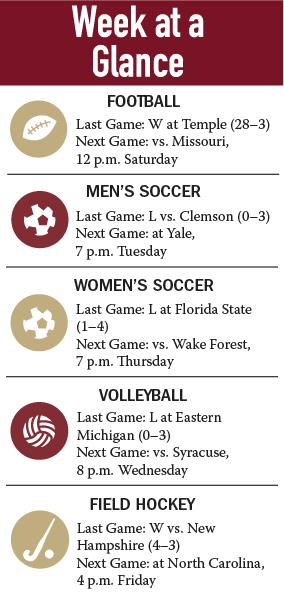
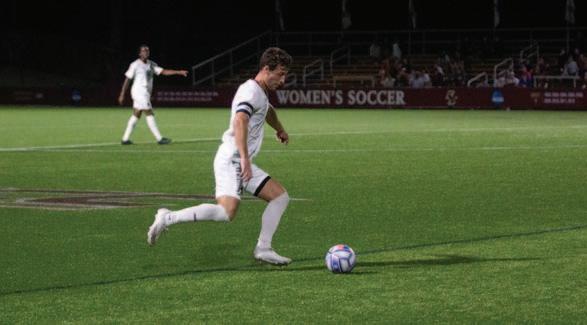
Clemson has not lost this season, outscoring its opponents 22–1 across its previous games. In every sense of the word, the Eagles were the underdogs.
Though No. 2 Clemson emerged with a 3–0 win, which may seem like a sound defeat, the Eagles battled against the Tigers, outshooting them in the first quarter and pressuring them up until the final minute.
BC (3–2–1, 0–1–1 Atlantic Coast) traveled to Death Valley to challenge undefeated Clemson (7–0, 2–0) on Friday night at Historic Riggs Field, looking to continue its five-game un-
beaten streak. Despite a strong first half, the Eagles’ defense struggled to contend against Clemson’s attackers in the final 45 minutes.
After playing two straight games into overtime, the Eagles are used to hard-nosed competition. These high-intensity games prepared BC for the fast-paced Clemson attackers, as the Eagles came out extremely aggressive in the first half. Although BC did not find the back of the net in the first half, it was not for lack of trying. The Eagles outshot Clemson 7–6 in shot attempts and 3–1 in shots on goal.
In the 17th minute of the game, the Tigers went stampeding toward BC goaltender Christian Garner, looking to get the first point of the game on the scoreboard. Ousmane Sylla sent a shot toward Garner, who blocked the ball with his body but was unable to secure a hand on it. Sylla’s shot deflected toward the feet of Tigers forward Isaiah Reid, who sent the ball sliding past Garner for the first score of the game, giving Clemson a 1–0 lead. It
marked Reid’s sixth goal of the season, putting him in a tie for most goals in the nation.
Down by one goal, the Eagles refused to relinquish control of the game. In the 40th minute, Michael Suski made a quick cut inside, setting himself up for a shot 20 yards away from the net. He maneuvered his body and crushed the ball toward Tigers goaltender George Marks, but the ball went just wide of the net.
BC attacker Kristofer Konradsson was also a force to be reckoned with, pressuring the Clemson defense with multiple attempts on net. Konradsson and Suski combined for seven shots on net, both playing nearly the whole game. Despite a strong first half from the visiting side, Clemson outshot the Eagles 15–13.
Adama Kaba made a similar move to Suski in the 55th minute of the game, cutting toward the left side of the field and sending an explosive shot toward Clemson’s goal,
but a Clemson defender blocked it just before it could just reach the net.
The second half of the game was a different story for the Eagles’ offense. Although BC had the early-game momentum, Clemson began to take over in the second half.
The switch began with a crossfield pass for the Tigers that gave
comfortable 3–0 lead.
SPORTS A10 MONDAY, SEPTEMBER 20, 2021 THE HEIGHTS
Brandon Parrish the ball. Parrish slid the ball to teammate Josh Hallenberger, who slotted the ball into the left side of the net, doubling Clemson’s lead. The Tigers did not stop there, as Parrish notched his team’s third goal of the game in the 83rd minute, earning a
STEVE MOONEY / HEIGHTS STAFF
The Eagles dropped their first ACC contest of the year to No. 2 Clemson.
BC came back from a one-goal deficit to beat New Hampshire on a penalty corner in overtime on Sunday.
College UNH 4 3 Boston College Clemson 0 3
NICOLE VAGRA / HEIGHTS STAFF
Boston
Florida Boston College 4 1
No.
2 Clemson Blanks BC for Eagles’ First ACC Loss





 I SABELLA T HORPE Heights Staff
I SABELLA T HORPE Heights Staff




























































